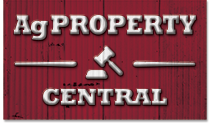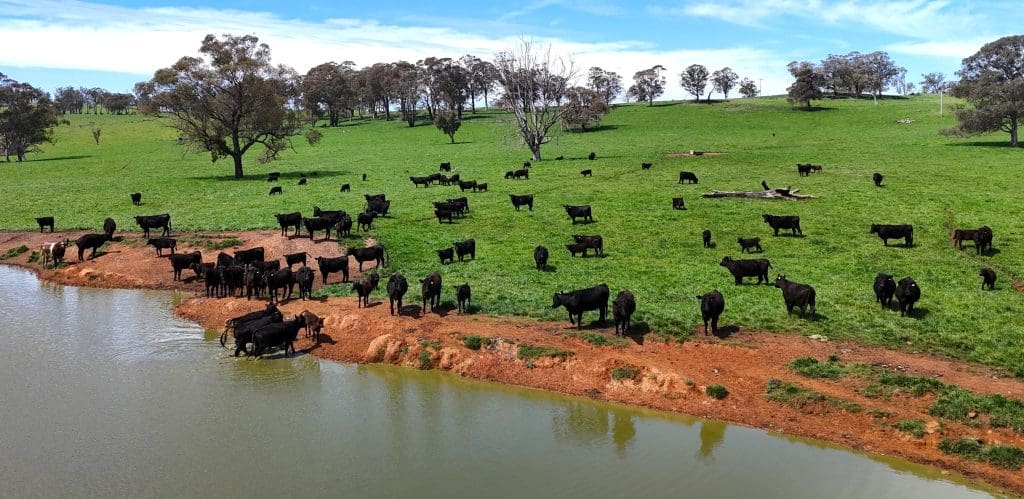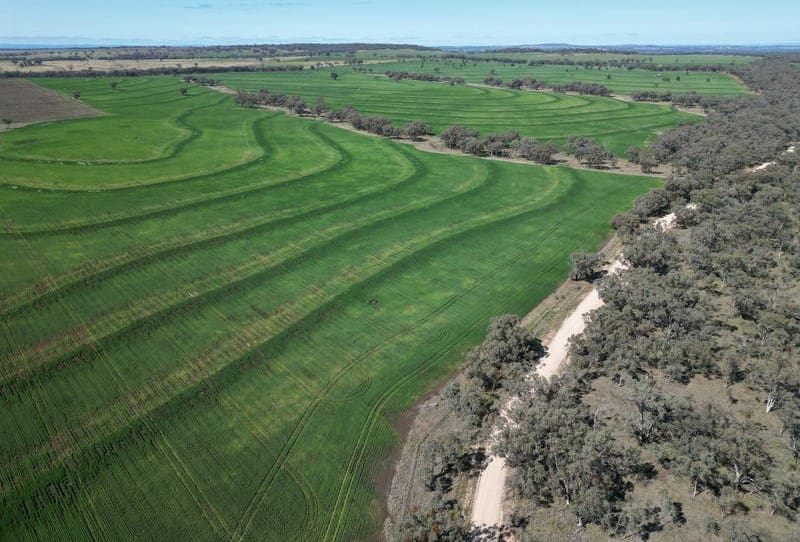THIS week’s property review includes a wrap-up of interesting recent listings across New South Wales and two separate stories on recent listings in Queensland, and Victoria, South Australia and Western Australia.
- Trabaldo Togna family lists New England jewel
- $22m for mixed enterprise near Coonabarabran
- Untapped potential on Northern Tablelands breeding block
- Graman’s Kulki lists for $20m+
- Historic Mylora returns to the market
- Upper Hunter beef holding offers landbanking
- Southern Tablelands grazing block lists after 36 years
Trabaldo Togna family lists New England jewel
Italy’s Trabaldo Togna family is selling its breeding and fattening enterprise in northern New South Wales’ New England with hopes of raising more than $31 million.
The 2734ha St Aubyns Station, described as one of the jewels of the New England, is located 33km south of Walcha and 35km from Nowendoc.
The core business of the Trabaldo Togna family is banking (they own two banks focused on private banking – one in Italy and the other in Switzerland).
However, heralding from the heart of the textile industry in Biella (the headquarters of luxury Italian textile firms as Loro Piana and Zegna), vendor, Massimo Trabaldo Togna said his family was long acquainted with Australia and its high-quality wools.
“The Australian investment in COFI SA, a Luxembourg holding company owned by the family, dates back to 1979 when it acquired the 30,000ha Glenrock Station near Scone and Narromine’s Buddah Station.”
“In the following years, Buddah, an irrigated property planted with cotton and orange trees, was sold followed by the sale of Glenrock in 2006,” Mr Trabaldo Togna explained.
St Aubyns Station, purchased in 2003, is highly improved and reliable sheep and cattle country with a history of running up to 1400 cows and followers.
Under the stewardship of the Trabaldo Togna family ownership, St Aubyns Station has focused on continued pasture development and fertiliser application with the goal of growing high-quality grass and increasing carrying capacity.
The primary objective has been to produce premium grassfed Angus and crossbred cattle for Woolworths, with vendor bred and trade cattle grown out to 500kg to 600kg liveweight.
The property features productive chocolate and red basalt soil types, with the country ranging from arable fodder cropping country to open rolling slopes and selected areas of native timber.
Situated in a 900mm rainfall zone, St Aubyns Station is also watered by two equipped bores, a network of permanent waterways, including a 9km Tia River frontage, spring-fed creeks and 54 dams.
Infrastructure includes four homes, including the four-bedroom St Aubyns Station homestead, three cattle yards, two shearing sheds and several sheds.
St Aubyns Station is being offered for sale via expression of interest closing on December 4.
$22m for mixed enterprise near Coonabarabran
Sydney businessman David Reid is seeking around $22 million (bare) for his mixed grazing and farming enterprise, labelled as one of the finest in the renowned Purlewaugh Valley.
The 3372ha Mia Mia Aggregation is 25km east of Coonabarabran and sits on the divide between the Central West and North West Slopes regions of New South Wales.
It comprises three properties – the adjoining 1249ha Mia Mia and 1141ha Elouera and the nearby 982ha Merrybah.
Mr Reid runs the aggregation as a mixed enterprise, cropping an area of 1012ha and running 900 cows and calves.
As a grazing only enterprise and with ongoing pasture development, numbers could be lifted to between 1200 and 1300 cows and calves.
Running from flat to gently sloping and undulating kurrajong country, the Mia Mia Aggregation has 2070ha of cultivation with the ability to produce winter cereals and or summer crops, plus a large amount of fodder.
It features a productive mix of mostly black and chocolate heavy self-mulching basalt soils and quick responding red and sandy loams.
Elders agent Ian McArthur said the $22m price guide represents a $17,000 a cow unit or $6524/ha ($2640/ac).
“Purlewaugh is tightly held by generational families and as a result, few properties have changed hands. It is similar to Coolah, with a slightly higher rainfall and a totally different price tag.”
- Mia Mia – 500ha of basalt soils growing summer and winter crops and 87ha of introduced and native pastures. Infrastructure includes a renovated three-bedroom home, cattle yards, numerous sheds and 200 tonnes of grain storage.
- Elouera – 770ha of basalt soils growing summer and winter crops and 42ha planted to oats. Infrastructure includes a four-bedroom home, cattle yards and 205t of grain storage.
- Merrybah – 880ha of basalt soils and red and sandy loams growing summer and winter crops, 220ha planted to oats and barley, 46ha planted to canola and 100ha of introduced pastures. Infrastructure includes two sheds, cattle yards and 100t of grain storage.
Receiving 700mm of rain a year, the Mia Mia Aggregation is watered by three bores, the Baby Creek and numerous dams.
In recent years, almost all of the road boundary fences and many internal fences have been replaced.
Infrastructure includes two renovated homes, a workman’s cottage, three cattle yards, numerous sheds and elevated grain silos.
Expressions of interest for the Mia Mia Aggregation close on November 8.
Untapped potential on Northern Tablelands breeding block
The Sydney-based McLachlan Group is consolidating its assets and offloading its breeding block on the Northern Tablelands of New South Wales.
The 4210ha Glenclair Aggregation is located 13km from Bendemeer and 45km north of Tamworth.
Aggregated over 45 years, it comprises three adjoining holdings – Glenclair, Airlie Station and Yaccamunda.
The diverse topography consists of productive river flats, soft undulating cleared country to steeper, heavily timbered areas capable of running up to 750 cows and calves.
Nutrien Harcourts Tamworth and Armidale agent Joel Fleming said the carrying capacity could be significantly increased with improved pastures, fertiliser and supplementary crops.
“Annually, the vendors retain a percentage of heifers each year as future breeders. However, the carrying capacity reflects a system that is operating with a low-cost management system in place.”
Mr Fleming reports good interest from local and southern Queensland producers seeking scale.
“Glenclair is an opportunity for large-scale cattle and sheep breeding that offers significant untapped potential.”
In addition to the grazing enterprise, the mostly granite soils, complemented by some areas of basalt country, are growing 42ha of oats and 24ha of millet.
It has 10km McDonald River frontage, numerous creeks, dams and spring fed gullies, as well as three water licences totalling 255ML in a 750mm to 800mm of average annual rainfall region.
Infrastructure includes three homes, multiple cottages, cattle and sheep yards, two shearing sheds and numerous sheds.
The Glenclair Aggregation will be auctioned online on December 4.
Graman’s Kulki lists for $20m+
After being held by the Capel family for more than 70 years, David and Annabelle Horn have listed Kulki in northern New South Wales to finalise an estate.
The 2146 hectares are anticipated to achieve more than $20 million on a bare basis, with expressions of interest closing on November 14.
Located near Graman, 39km north-west of Inverell and 60km north-east of Warialda, Kulki is a mixed grazing and cropping enterprise that previously operated as a merino stud.
Currently, 961ha (45 percent) of the mostly heavy black self-mulching to chocolate brown soils are developed to dryland cropping comprising 585ha of barley, 331ha of oats and 45ha of lucerne.
The 1185ha balance is used for beef and lamb production. Presently understocked, Kulki is running 30 cows and calves, 113 steers and 950 ewes that are currently lambing.
Benefiting from 750mm of annual average rainfall, the property has a number of reliable and secure water sources including 11 dams, three bores and the spring-fed Pine Nob Gully and Wyndhams Creeks.
Infrastructure includes a circa 1900 four-bedroom home, numerous sheds, two cattle yards, a 10-stand shearing shed, sheep yards, shearing quarters and five grain silos with 340-tonnes of storge.
Over the past two years, 10 to 12km of new fencing has been constructed.
LAWD agent George Barton is handling the sale.
Historic Mylora returns to the market
Offers around $30 million are being sought for an iconic mixed grazing and farming property, close to Canberra, boasting an historic homestead.
The 3209ha Mylora was offered to the market in September last year by Angus Graham, who has lived at and managed the property for the past 26 years.
It has now returned as a smaller holding of 1861ha, with the remaining 1348ha retained as two separate adjoining properties or available to buyers chasing increased scale.
The well-located mixed grazing and farming asset is situated 10km from Binalong, 31km from Yass and 93km from Canberra on New South Wales’ Southern Tablelands.
Offered for the second time in its 170-year history, Mylora has long been recognised as one of the premier holdings in the district.
Not only was it a Cobb & Co stop and visited by bushrangers John Gilbert and Ben Hall, Mylora neighbours the childhood home of Australian poet AB ‘Banjo’ Paterson who named his first published poem, ‘The Mylora Elopement’ after the property.
McGrath Rural agent Stuart Davies is already fielding inquiry from a wide range of interested parties.
“Large farming families and corporates are dominating domestic interest, while international inquiry is coming from the United Kingdom, Asia, the Middle East and Africa, as well as high net worth individuals seeking a trophy asset.”
Mylora has a 30,000DSE carrying capacity but is conservatively running 650 cows and calves and 5000 ewes with lambs.
Mr Graham said Mylora is a beautiful mix of country ideal for breeding livestock.
“The cattle and sheep feeding facilities provide drought security and the capacity to also finish breeder progeny or additional trading stock.”
A large portion of the property is arable and this year 600ha was planted to dual purpose winter grazing crops of canola, wheat and oats.
Water is a feature, with 13km of double frontage to the Jugiong Creek, 3km of double frontage to Bushrangers Creek as well as Illalong, Garry, Sawpit and Blind Creeks.
Almost every paddock has a dam, there are three bores and a 24ML licence, supported by 672mm of reliable average annual rainfall.
Infrastructure includes a renovated circa 1820 six-bedroom bluestone homestead, two cottages, shearers’ quarters, an eight-stand shearing shed, cattle and sheep yards, two feedlots and feed mill, numerous sheds and 2400-tonnes of silo capacity.
Expressions of interest for Mylora close on November 15.
Upper Hunter beef holding offers landbanking
Cattle breeding and finishing country in New South Wales’ Upper Hunter has been listed with a $11.5 million to $13.5 million price guide.
The 1516ha Naracoorte is located 3km from Moonan Flat and 54km east of Scone.
Naracoorte ranges from fertile alluvial valley floors to arable sloping grazing country flanked by timbered hills suitable for running 430 breeders, with progeny carried in favourable seasons.
Under the current ownership, around 80ha are sown annually to permanent pastures (temperate or sub-tropical), lucerne or annual fodder or cash crops (such as oats and sorghum).
McGrath agent Michael Burke said native grasses and herbages are in abundance and enjoying a spectacular spring.
“The irrigated lucerne has produced up to 300 round bales a year. With disc drilling, the annual cropping program or permanent pastures could be increased to more than 240ha.”
Watered by 7km of Hunter River frontage, Naracoorte has 36 dams and two centre pivot irrigators.
Naracoorte could be divided into six riverfront lots, each with a dwelling or a dwelling entitlement by way of a DA approved subdivision:
- 589ha Gowrie – an architectural designed four-bedroom home, a shearing shed and a bore
- 62ha Airstrip – cattle yards
- 129ha Oakfields – a three-bedroom cottage, a centre pivot irrigator shed
- 60ha Sunny Grove – a three-bedroom cottage
- 674ha Nields Creek – a centre pivot and improved pastures
- 3ha Banyandah – a renovated four-bedroom home.
Expressions of interest close on November 22.
Southern Tablelands grazing block lists after 36 years
More than $16m is anticipated for Rosedale, a grazing enterprise in New South Wales’ Southern Tablelands region.
The 1020ha are situated near Quialigo, 12km from Goulburn and 107km from Sydney and are being offloaded by an off-farm investor after 36 years of ownership and continual development.
Currently operating as a beef production platform running 460 breeders and followers, Rosedale is offered with a 9000DSE to 10,000DSE carrying capacity.
The property would also suit prime lamb production, dual-purpose cash cropping, fodder and/or hay production.
The versatile, undulating country is mostly cleared of timber with 85 percent considered arable. Soils are red and brown granite loams suited to winter perennial pasture development and fodder cropping.
Inglis Rural Property CEO Sam Triggs said Rosedale is managed by a local farmer making it a great passive investment with turnkey effective and experienced management already in place.
“Rosedale has benefitted from a strong history of professional management and agronomic investment.”
“Ongoing investment in laneways, pasture renovation and fertiliser underpins the profitability of the cattle business and combined with the local management team, ensures it is a streamlined and efficient operation,” Mr Triggs said.
Mr Triggs said there is future potential upside and land banking for the incoming purchaser.
“The investment opportunity is underpinned by the DA approved 22 lot subdivision with substantial works already underway.”
There are multiple water sources including double frontage to the Bullamalito and Quialigo Creeks, 35 dams and two equipped bores.
Infrastructure includes a four-bedroom cottage, steel cattle and sheep yards, a four-stand shearing shed, sheds and six silos.
Rosedale is offered for sale by expressions of interest closing on November 8.




HAVE YOUR SAY